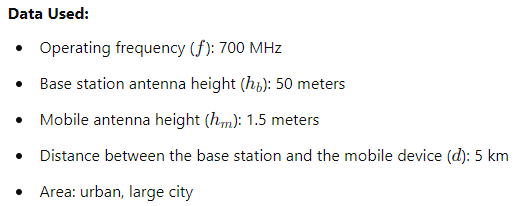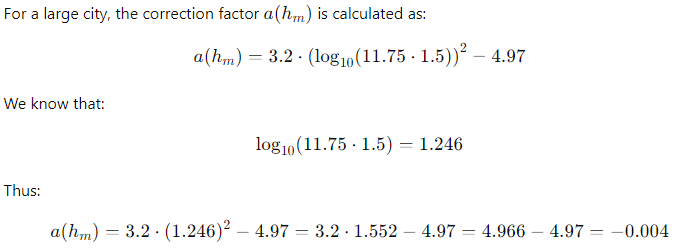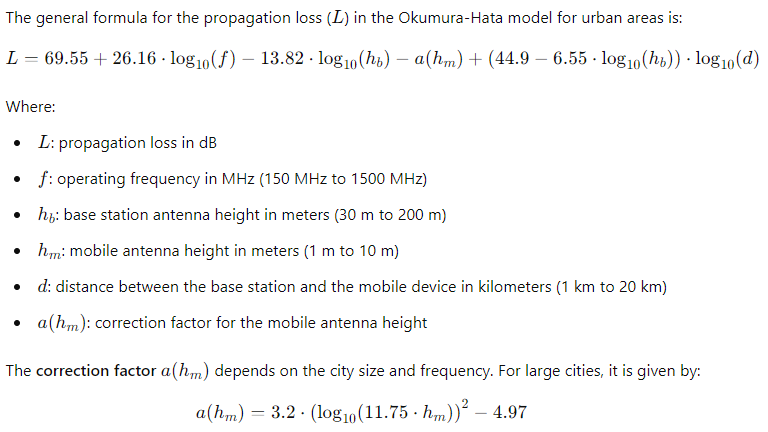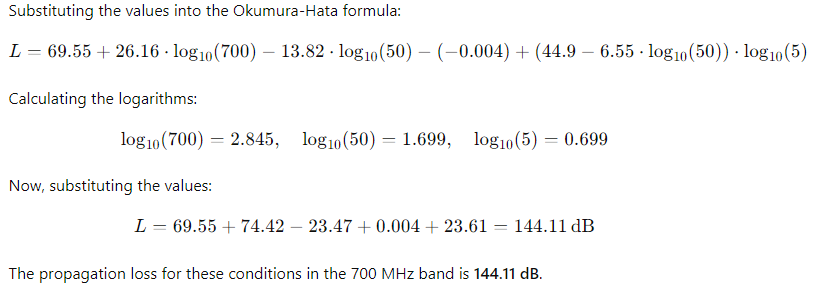Propagation Loss Calculation Using the Okumura-Hata Model for LTE 700 MHz: Theory and Practical Application
Introduction
Propagation loss is one of the most important factors in designing telecommunications networks, directly impacting coverage and signal quality. To predict the attenuation of radio signals in various environments, several propagation models have been developed. One of the most recognized and widely used models for urban and suburban areas is the Okumura-Hata model, originally proposed by Okumura and refined by M. Hata.
This article presents the theory behind the Okumura-Hata model, its significance in LTE network planning, and practical calculations for the 700 MHz frequency band, one of the main bands used for LTE (Long Term Evolution) technology. Additionally, we will calculate the power received by a mobile device, considering the receiver sensitivity.
History and Theory of the Okumura-Hata Model
The Okumura model was developed by Yoshihisa Okumura in the 1960s to estimate propagation loss in urban, suburban, and rural areas in Japan. Based on extensive measurements in various scenarios, the model provides an empirical method to predict radio signal attenuation in different environments. However, the original model was quite complex due to the large number of adjustable parameters.
Based on Okumura’s results, M. Hata refined the model to make it more practical and applicable for telecommunications engineering calculations. The Okumura-Hata model is a simplified version and widely adopted to predict propagation loss in mobile systems, particularly for frequencies between 150 MHz and 1500 MHz, making it a key model for modern network planning.
Okumura-Hata Propagation Model Formula
Application of the Model for LTE 700 MHz
The 700 MHz band is widely used in LTE networks due to its good propagation and penetration capabilities in urban and rural areas. Let’s apply the Okumura-Hata formula to calculate the propagation loss in the 700 MHz band.
Propagation Loss Calculation Example

Step 1: Correction Factor Calculation

Step 2: Propagation Loss Calculation
Calculation of Power Received by the Mobile Device

Receiver Sensitivity
The calculated received power, -95.08 dBm, falls within the typical sensitivity range for LTE receivers, which is generally between -100 dBm and -120 dBm, depending on the device and technology used. This indicates that the signal is strong enough to maintain a stable connection.
Conclusion
The Okumura-Hata model remains a valuable tool for planning cellular networks, particularly in urban environments where accurate propagation loss predictions are crucial for ensuring adequate coverage and service quality. We applied the model to the 700 MHz band, which is widely used for LTE, and determined that the received signal at the mobile device would be -95.08 dBm, which is sufficient for reliable communication.
This article has demonstrated how to apply the Okumura-Hata model in practical calculations and the importance of considering receiver sensitivity when evaluating signal quality in LTE networks.
LinkedIn (in Portuguese): ![]()

